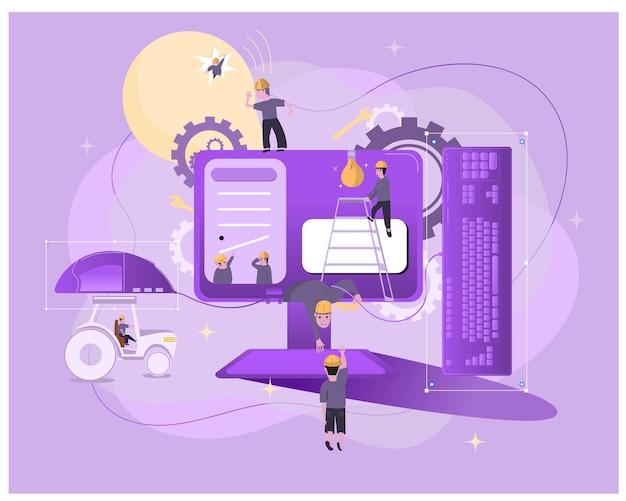Engaging employees is crucial for a thriving and successful organization. But have you ever heard of transactional employee engagement? In this blog post, we are going to delve into this intriguing concept and discover its role in shaping employee behavior and organizational outcomes. From understanding what transactional engagement means to exploring real-life examples and the three types of employee engagement, get ready to uncover the secrets of building a motivated and productive workforce. So, let’s dive in and explore the world of transactional employee engagement!
Transactional Employee Engagement: The Art of Employee Motivation
When it comes to motivating employees, it’s no secret that a little something extra can go a long way. That’s where transactional employee engagement comes into play – it’s like adding a cherry on top of the workplace happiness sundae. In this section, we’ll explore how this unique approach can boost morale, productivity, and create a positive work environment.
Breaking Down Transactional Employee Engagement
What exactly is transactional employee engagement, you ask? Well, it’s like a friendly give and take dance between employers and employees. It’s a way of saying, “Hey, we value your hard work, and we’re going to show it.” It involves a variety of perks, rewards, and recognition strategies that make employees feel appreciated and motivated to perform at their best.
Unlocking the Power of Rewards
One essential aspect of transactional employee engagement is the use of rewards. And no, we don’t mean handing out gold bars or granting spa retreats after every completed task. We’re talking more along the lines of simple pleasures – like a free lunch, an early finish on Fridays, or even a monthly “employee of the month” award. These rewards may seem small, but they can have a significant impact on overall job satisfaction and productivity.
Recognition: A Pat on the Back Goes a Long Way
In addition to rewards, recognition plays a vital role in transactional employee engagement. It’s about acknowledging the hard work and achievements of your employees publicly. Whether it’s a shout-out during a team meeting, a handwritten note, or a mention in the company newsletter, recognizing employees’ efforts can make them feel valued and appreciated. Plus, it adds a little sprinkle of motivation to keep them going.
The Art of Flexibility
Another key element of transactional employee engagement is providing flexibility in the workplace. Giving employees the freedom to manage their time and work environment can work wonders for their motivation and engagement. Whether it’s the option to work remotely, adjustable working hours, or even a relaxed dress code, a little flexibility can go a long way in boosting employee happiness and productivity.
So, there you have it – transactional employee engagement in a nutshell. By incorporating rewards, recognition, and flexibility into the workplace, employers can create a more positive and motivating environment. Remember, it’s all about the little things and showing appreciation for your employees’ hard work. So, go ahead, sprinkle some transactional engagement magic and watch your team thrive!
Subsection: A Fun Take on Transactional Employee Engagement
What’s the Deal with Transactional Engagement
Transactional engagement… now that’s a phrase that sounds like it could be the secret password into a secret club for HR professionals. But fear not, my fellow readers, as I am here to break it down for you in the simplest, most entertaining way possible.
First things first, let’s clarify what transactional engagement actually means. In a nutshell, it’s all about give and take. It’s like a dance between employers and employees, where both parties have their own set of expectations and they agree to meet those expectations.
The Give and Take Tango
Picture this: you’re at a fancy ballroom party and you spot two dancers on the dance floor. One is called “the employer,” and the other is called “the employee.” They gracefully twirl, dip, and spin, perfectly in sync with each other. Each move represents a transactional engagement.
The employer says to the employee, “Hey, I need you to meet your performance goals, and in return, I’ll provide you with fair compensation and recognition for your hard work.” The employee responds with, “Sure, I’ll give it my all, and in return, I expect job security and opportunities for growth.”
And just like that, the give and take tango begins!
A Win-Win Situation
Transactional engagement is all about creating a win-win situation. When employers and employees are on the same page, it’s like a match made in HR heaven. Employers get the best possible performance from their employees, and employees feel valued and motivated to excel.
Imagine a workplace where employees are treated like prized possessions, where their efforts are recognized and rewarded. In this utopia, everyone is motivated to put their best foot forward, and the organization as a whole thrives. Sounds like a dream, doesn’t it?
Beyond Money: The Hidden Joys of Transactional Engagement
While transactional engagement might sound like a cold, business-like concept, there’s actually more to it than meets the eye. It’s not just about money and benefits, my friends. It’s about creating a culture of trust, open communication, and mutual respect.
When employers show genuine concern for their employees’ well-being and happiness, it goes beyond the realm of a transactional relationship. It becomes a bond built on trust and shared values. And let’s be honest, who wouldn’t want to work in a place like that?
So there you have it, folks! Transactional engagement may sound like a serious business term, but at its core, it’s all about the give and take dance between employers and employees. It’s about creating a win-win situation where everyone feels valued and motivated.
Now, go forth and embrace the power of transactional engagement in your workplace! Let the give and take tango begin, and watch as your organization thrives like never before. Happy dancing!
Transactional Work Examples
Delighting Customers with a Wink and a Smile
Transactional work isn’t always as dull as filling out spreadsheets or crunching numbers. In fact, there are plenty of roles where employees can inject their unique personality and make a lasting impact. Take customer service, for example – those unsung heroes who tirelessly handle complaints, inquiries, and the occasional odd request.
Being a Master of Puns
In the transactional world of customer service, a quick wit and a pun-filled brain can work wonders. Imagine being on the phone with an exasperated customer who can’t get their device to work. A touch of humor can diffuse the tension and turn their frown upside down. So, instead of sticking to a rigid script, transactional employees can flex their comedic muscles and come up with pun-tastic solutions that have customers laughing while their problems get sorted.
Providing Empathetic Listening
Sometimes, all a person needs is someone to listen to their frustrations. Transactional employees who embody the art of empathetic listening can turn a routine interaction into a meaningful connection. By genuinely caring about their customers’ problems, they create a safe space for venting, sharing stories, or even discussing shared interests. These personalized interactions not only result in happier customers but also make the employee’s day more enjoyable.
Creating Memorable Surprises in the Workplace
Who said transactional work couldn’t be a catalyst for fun? Just because certain tasks may seem repetitive doesn’t mean there’s no room for creativity. Employees can unleash their imagination and inject some joy into their daily routines, leading to a truly engaging workplace.
Celebrating Quirky Holidays
Why limit festivities to the traditional holidays? Transactional employees can go beyond Christmas and Thanksgiving, and instead, celebrate quirks like “National Popcorn Day” or “National Donut Day.” Imagine the excitement of finding surprise popcorn bags or donut boxes on your desk, thanks to a fun-loving colleague. These small gestures keep the workplace alive with anticipation and foster a sense of camaraderie among team members.
Organizing Themed Dress Days
Who doesn’t love playing dress-up once in a while? Transactional employees can choose a theme, like “Superhero Day” or “Favorite Movie Character Day,” and show off their creativity through costumes. This not only brings smiles and laughter to the office but also creates opportunities for non-work-related conversations, where employees bond over shared interests and discover new connections.
In conclusion, transactional work doesn’t have to be synonymous with boredom. By infusing their jobs with humor, empathy, surprises, and creativity, employees can create memorable experiences for both themselves and their customers. So, let’s embrace the charm of transactional work and turn mundane tasks into gratifying and enjoyable moments.
Transactional HR Activities: The Fine Art of Ticking Boxes
What are Transactional HR Activities
Transactional HR activities, my friend, are those little tasks that HR professionals do to maintain the delicate flow of employee engagement. You see, HR departments don’t just magically appear out of thin air; they work tirelessly to ensure that everything runs smoothly in the realm of the workforce.
The Nitty-Gritty of Filling Forms and Checking Boxes
Onboarding: The HR Welcome Wagon
Let’s kick things off with onboarding – the moment when fresh-faced employees enter the company’s domain and HR swings into action. From paperwork to policies, HR professionals have a knack for making newbies feel like they’re signing their lives away (but in a good way, of course).
Job Descriptions: Where Words Do All the Work
Next up, we have job descriptions – those mystical documents that define an employee’s role in the grand scheme of things. HR gurus have a way with words, carefully crafting descriptions that make even the most mundane tasks sound like epic journeys. Who knew that filing paperwork could be so thrilling?
Performance Management: The Balancing Act
Ah, performance management – the secret sauce behind keeping employees on their toes. HR specialists, armed with their trusty rating scales and evaluation forms, ensure that no slacker goes unnoticed. They even throw in a fancy performance review meeting for good measure, making employees squirm like ants under a magnifying glass.
Time Off Requests: The Power Play
Need a break? HR’s got your back! Whether it’s a vacation, a day off, or an emergency leave, HR professionals have mastered the art of juggling time off requests. They wield their mighty approval stamp with authority, deciding who gets a well-deserved breather and who gets stuck waiting for the next available slot.
The Delicate Dance of Transactional HR
Now that we’ve scratched the surface of transactional HR activities, it’s clear that there’s so much more to it than just ticking boxes. HR professionals are the unsung heroes of the workplace, keeping the gears turning and the workforce engaged. So, the next time you see an HR colleague with a stack of forms in hand, give them a nod of appreciation. Because without them, the employee engagement dance would be a whole lot less groovy.
Behavioral Employee Engagement
Understanding the Psychology of Employee Engagement
Now that we’ve covered transactional employee engagement, let’s dive into the fascinating world of behavioral employee engagement. Trust me, this stuff is more riveting than binge-watching your favorite TV show!
It’s All About the Brain
When it comes to behavioral employee engagement, it’s essential to understand the inner workings of the human brain. Our brains are complex machines, constantly seeking motivation, rewards, and satisfaction. Think of your brain as a little superhero, tirelessly searching for happiness and fulfillment in the workplace.
The Power of Positive Reinforcement
Remember Pavlov’s dogs? Well, in the workplace, we humans are not that different. Positive reinforcement can work wonders in boosting employee engagement. A simple “good job” or a well-deserved pat on the back can make employees feel valued and appreciated, giving them the motivation to go the extra mile.
The Art of Gamification
Who said work can’t be fun? By incorporating elements of gamification into the workplace, you can tap into the innate human desire for competition and achievement. Create challenges, offer rewards, and watch as your employees transform into high-performing game-changers. Just make sure they don’t get too caught up in playing Candy Crush during office hours!
The Importance of Autonomy
Let’s face it, no one likes being micromanaged. Giving your employees a sense of autonomy can do wonders for their engagement. Allow them to take ownership of their work, make decisions, and have the freedom to explore their own ideas. After all, innovation often stems from individuals who are given the space to think outside the box.
Communication – The Ultimate Engagement Tool
Effective communication is the glue that holds employee engagement together. Encourage open and transparent communication channels, promote collaboration, and listen to your employees’ ideas and concerns. By fostering a culture of open dialogue, you’ll create an environment where employees feel valued and have their voices heard.
TL;DR – Make Engagement Your Superpower
To sum it up, behavioral employee engagement is all about understanding the psychology of motivation, utilizing positive reinforcement, gamification, promoting autonomy, and fostering open communication. So, put on your engagement cape and unleash your superpowers to create a workplace where employees feel empowered, motivated, and ready to conquer the world (or at least the office fridge)!
Phew! That was a mouthful, but I hope this subsection has given you some amazing insights into the fascinating world of behavioral employee engagement. Strap on your thinking caps, experiment with different approaches, and get ready to supercharge your employee engagement efforts!
What is a Transactional Employee
Understanding the Basics
When we talk about transactional employees, we’re not referring to secret agents working undercover in the business world. No, no, these employees aren’t chasing villains or solving mysteries. In fact, they’re quite the opposite – they’re just your regular, everyday employees.
The “9 to 5” Type
You know the type – those employees who are strictly focused on completing tasks and ticking off items on their to-do lists. They show up at 9 a.m. sharp, grab a cup of overly-caffeinated coffee, and retreat into their cubicles for the rest of the day. These transactional employees are all about getting the job done, but don’t expect them to go the extra mile or get too chummy at the water cooler.
A No-Frills Approach
Transactional employees are what you might call “no-nonsense” individuals. They’re not there to make friends or engage in office banter. Instead, they prefer to keep their heads down, accomplish their work, and leave promptly at 5 p.m. sharp. These employees are all about the transactions – they do what’s required of them, but not much more.
It’s Just Business, Baby
For transactional employees, work is primarily a business transaction. They put in the time and effort required, but don’t expect them to have a deep emotional connection to their work or the company. They’re not going to be the ones volunteering for extra projects or offering to stay late to help out. When the clock strikes 5, they’re out the door faster than you can say “transactional employee.”
The Pros and Cons
While transactional employees may not be the most warm and fuzzy individuals in the office, they do have their strengths. They’re dependable, reliable, and can be counted on to get the job done. On the flip side, their lack of emotional investment in their work can sometimes hinder creativity and innovation. So while they may not be the stars of the show, transactional employees play an important role in keeping the wheels turning.
Wrapping Up
So there you have it – a crash course on transactional employees. They may not be the most exciting or dynamic individuals in the workplace, but they have their place in the grand scheme of things. Whether you love ’em or find them a bit dry, one thing’s for sure – they’re here to stay, making transactions and keeping the work world spinning.
Three Types of Employee Engagement
Traditionalists: The Company Lifers
Some employees are traditionalists who have been with a company since the inception of the fax machine. They’ve seen it all, from the days of typewriters to the era of email overwhelm. Traditionalists are the backbone of the company, the ones who know where all the office supplies are stored and the secret hiding place of the good coffee. They may not be as tech-savvy as the newbies, but their experience and loyalty are unmatched. Engaging these employees often involves recognition for their long service and creating opportunities for mentorship.
Technology Geeks: The Digital Wizards
The company’s technology geeks are the unsung heroes of the office. They’re the ones who can fix the jammed printer, set up a video conference in a jiffy, and even rescue a deleted presentation from the depths of the digital abyss. These employees are fueled by a perpetual curiosity about the latest gadgets and apps. Engaging technology geeks means providing them with cutting-edge tools and opportunities for professional development in the digital realm. Bonus points if you can sneak in a quick game of ping pong during lunch breaks!
Millennial Mavericks: The Change Catalysts
The millennial mavericks are the trailblazers of the workplace, armed with their smartphones and limitless enthusiasm. They’re the social media-savvy generation who can turn a viral tweet into a marketing triumph. Millennial mavericks value a collaborative work environment and crave opportunities to make an impact. Engaging these employees means giving them a platform to showcase their creativity and empowering them to bring fresh perspectives to the table. Don’t be surprised if you find them brainstorming in bean bag chairs or suggesting team outings to an escape room.
In a nutshell, there are three distinct types of employee engagement: the traditionalists, the technology geeks, and the millennial mavericks. Recognizing and tapping into the unique characteristics of each group is key to fostering a harmonious and motivated workforce. So, whether it’s celebrating a traditionalist’s work anniversary, providing the geeks with state-of-the-art gadgets, or empowering the mavericks to drive change, remember that a hearty dose of engagement can go a long way in creating a happy and productive workplace.



